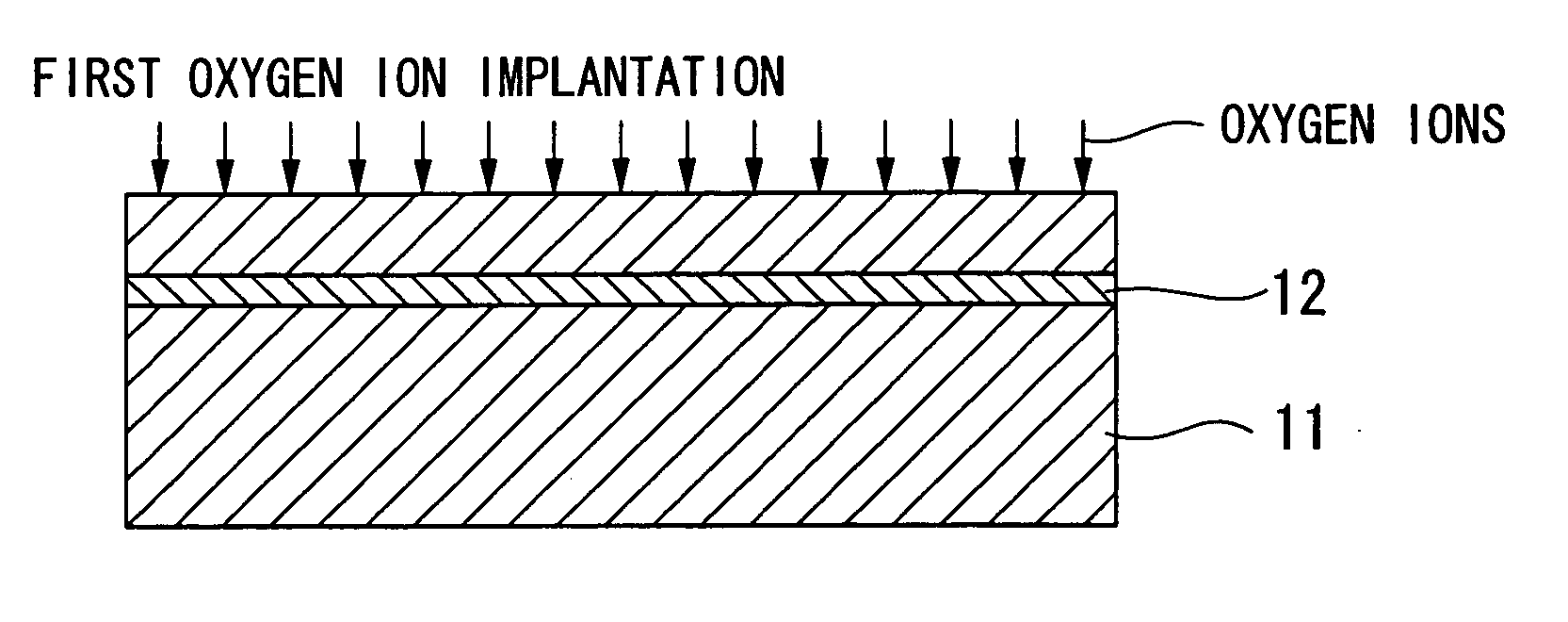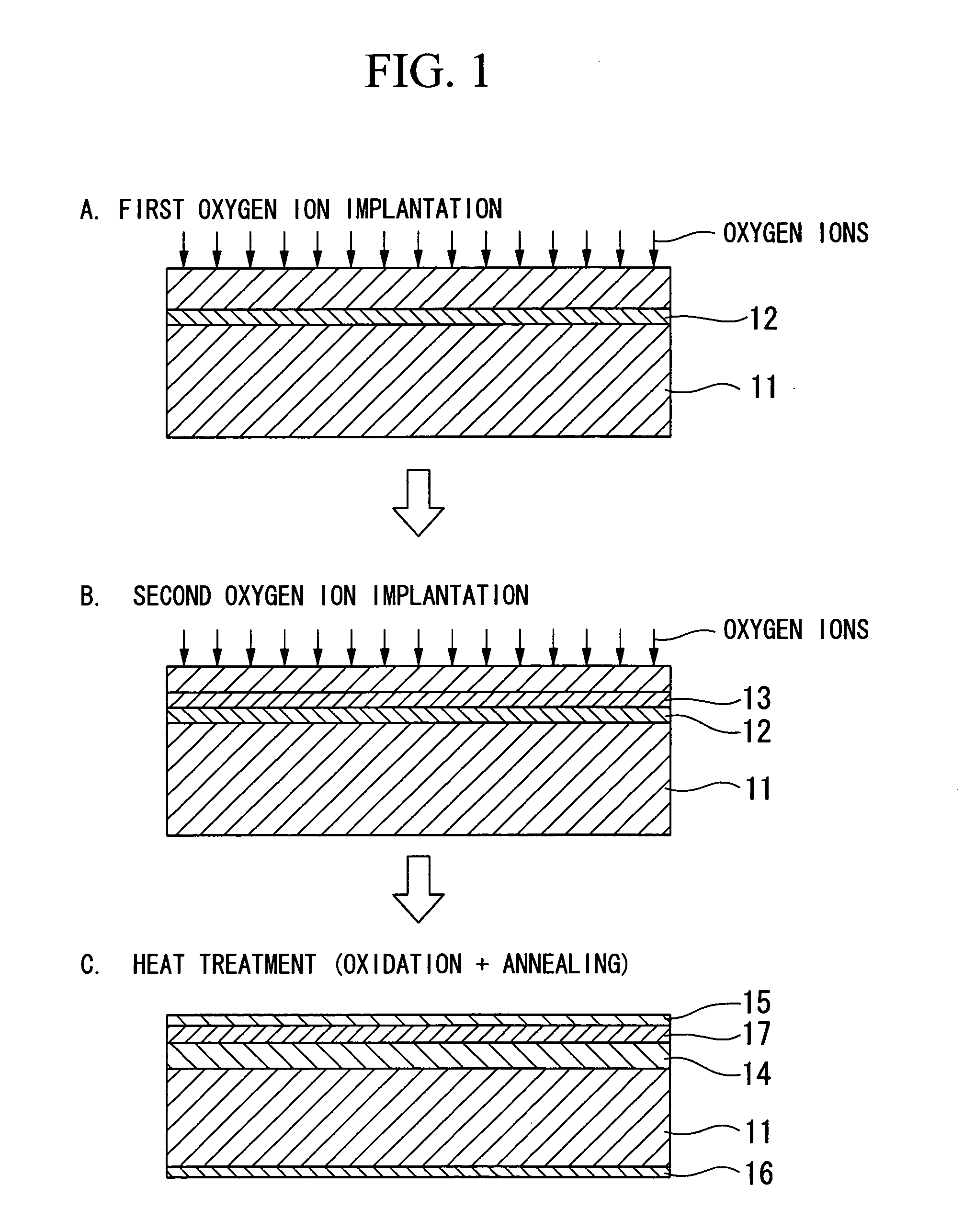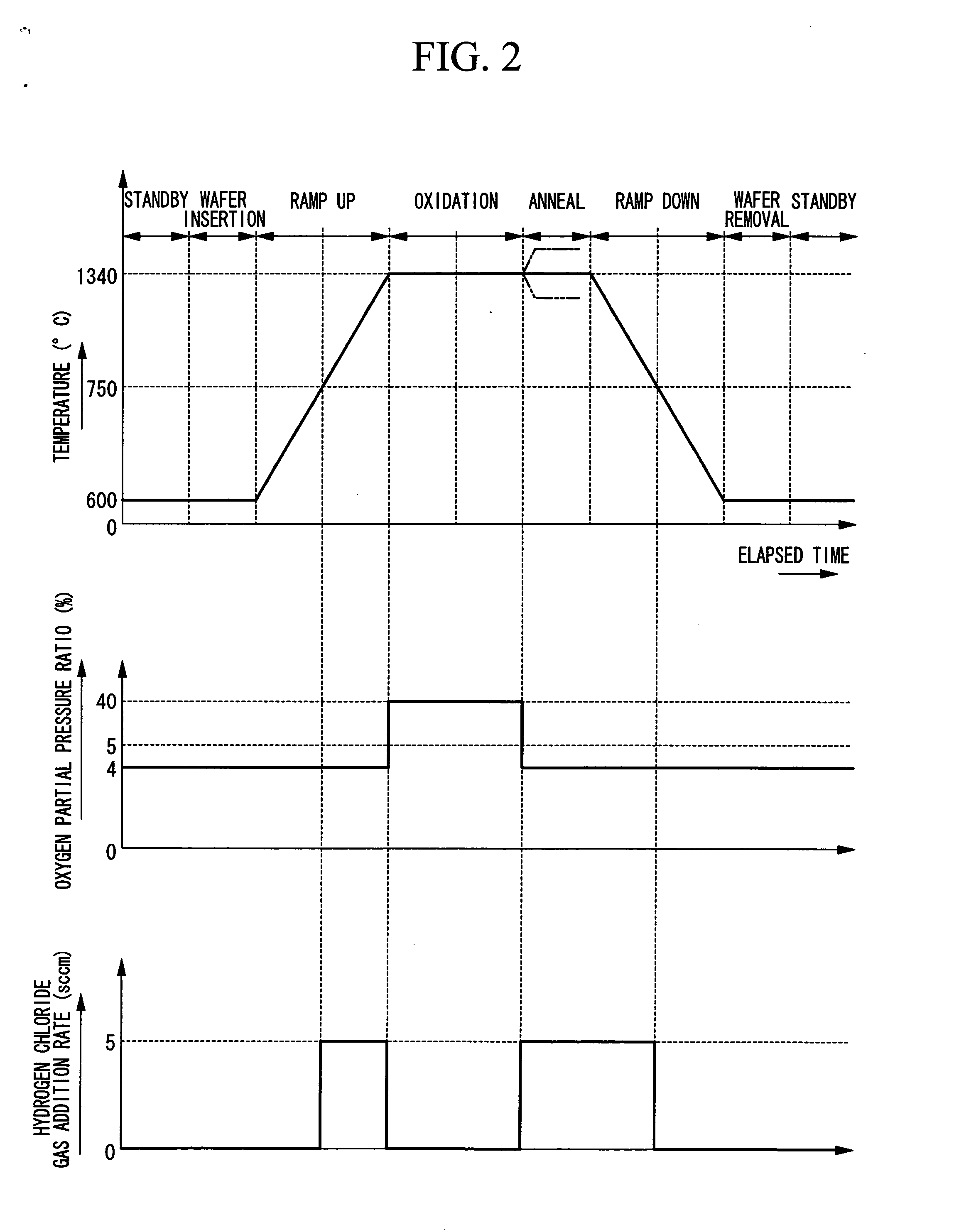Method for manufacturing SIMOX wafer
- Summary
- Abstract
- Description
- Claims
- Application Information
AI Technical Summary
Benefits of technology
Problems solved by technology
Method used
Image
Examples
example 1
[0050] A silicon wafer 11 was manufactured by the MLD-SIMOX process, as shown in FIG. 1. First, oxygen ion implantation of the wafer 11 was carried out in two steps. In the first oxygen ion implantation step, the wafer 11 was heated in a vacuum to 400° C., and implantation was carried out at an oxygen ion dose of 3×1017 atoms / cm2. In the second oxygen ion implantation step, which immediately followed the first oxygen ion implantation step, the temperature of the wafer 11 was lowered to room temperature and implantation was carried out at an oxygen ion dose of 2×1015 atoms / cm2. In this way, the surface of the wafer 11 remained a single crystal and a high oxygen concentration layer 12 and an amorphous layer 13 were formed in the wafer 11.
[0051] Next, the wafer 11 was placed in a heat treatment furnace, the temperature was raised to 1340° C. at a ramp rate of 1° C. / min in a ramp-up step, held at 1340° C. for 10 hours in an oxidation treatment step, held at 1340° C. for 5 hours in an a...
example 2
[0052] In the wafer ramp-down step, treatment was carried out by feeding argon gas containing oxygen in a partial pressure ratio of 4% to the heat treatment furnace at a flow rate of 25 slm, feeding trans-LC along with a carrier gas at a flow rate of 5 sccm, and mixing the two gases. In the wafer ramp-up step and anneal step, treatment was carried out by feeding only argon gas containing oxygen in a partial pressure ratio of 4% to the heat treatment furnace at a flow rate of 25 slm. In the wafer oxidation treatment step, treatment was carried out by feeding only argon gas containing oxygen in a partial pressure ratio of 40% to the heat treatment furnace at a flow rate of 25 slm. Aside from the above, a wafer was manufactured in the same way as in Example 1. This wafer was “Example 2”.
example 3
[0053] In the wafer ramp-up step, treatment was carried out by feeding argon gas containing oxygen in a partial pressure ratio of 4% to the heat treatment furnace at a flow rate of 25 slm, feeding trans-LC along with a carrier gas at a flow rate of 5 sccm, and mixing the two gases. In the wafer anneal step and ramp-down step, treatment was carried out by feeding only argon gas containing oxygen in a partial pressure ratio of 4% to the heat treatment furnace at a flow rate of 25 slm. In the wafer oxidation treatment step, treatment was carried out by feeding only argon gas containing oxygen in a partial pressure ratio of 40% to the heat treatment furnace at a flow rate of 25 slm. Aside from the above, a wafer was manufactured in the same way as in Example 1. This wafer was “Example 3”.
PUM
| Property | Measurement | Unit |
|---|---|---|
| Fraction | aaaaa | aaaaa |
| Partial pressure | aaaaa | aaaaa |
Abstract
Description
Claims
Application Information
 Login to View More
Login to View More - R&D
- Intellectual Property
- Life Sciences
- Materials
- Tech Scout
- Unparalleled Data Quality
- Higher Quality Content
- 60% Fewer Hallucinations
Browse by: Latest US Patents, China's latest patents, Technical Efficacy Thesaurus, Application Domain, Technology Topic, Popular Technical Reports.
© 2025 PatSnap. All rights reserved.Legal|Privacy policy|Modern Slavery Act Transparency Statement|Sitemap|About US| Contact US: help@patsnap.com



